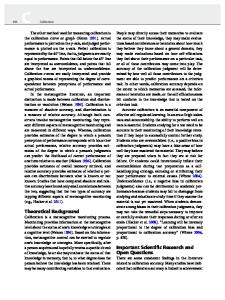Plasticity Characteristics Obtained Through Instrumental
- PDF / 172,592 Bytes
- 6 Pages / 612 x 792 pts (letter) Page_size
- 76 Downloads / 403 Views
1049-AA05-06
PLASTICITY CHARACTERISTICS OBTAINED THROUGH INSTRUMENTAL INDENTATION Yuliy Milman1, Sergey Dub2, and Alex Golubenko1 1 Physics of High-Strength and Metastable Alloys, Institute for Problems of Material Science, 3, Krzhizhanovski Str., Kiev, 03142, Ukraine 2 Mechanical Properties of Superhard Materials, Institute for Superhard Materials, 2, Avtozavodskaya Str., Kiev, 04074, Ukraine ABSTRACT The nanohardness and microhardness testing of crystalline materials with different types of interatomic bonds and different crystal structures was performed with a Berkovich indenter. The plasticity characteristics was determined from the ratio of area under the unloading curve to the area under the loading curve (δA) in the process of instrumented indentation. It is shown that δA coincides with the plasticity characteristic δH calculated from Young’s modulus E, microhardness HM, and Poisson’s ratio ν at δH ≥ 0.5 according to a theory developed earlier, i.e., for all metals and most covalent crystals and ceramics. A relation describing the dependence of the plasticity characteristic on the load applied to an indenter, provided that the Meyer relation is satisfied, was obtained. It is experimentally shown that at δA > 0.5, the plasticity characteristic δA is determined by the expression δ A = 1 − 10.2 ⋅ HM ( 1 − ν − 2ν 2 ) / E , which was obtained theoretically for δH early. Plasticity characteristics δA and δH may be used for characterization of mechanical behaviour of materials which are brittle at standard mechanical tests and for coatings. INTRODUCTION The majority of modern materials (excluding metals and metallic alloys) are lowplasticity or even brittle materials in standard mechanical tests. However, the plasticity of these materials can be characterized by the indentation method. Since plasticity is usually characterized as a capability of a material to retain a part of strain, caused by loading, after unloading, it was proposed [1] to characterize plasticity with a dimensionless parameter equal to the fraction of plastic strain in the total elastoplastic strain
δ = ε p / ε t = ε p /( ε p + ε e ) = 1 − ε e / ε t ,
(1)
where εp, εe and εt are, respectively, the plastic strain, elastic strain, and total strain, at that, εt = ε p + εe . Plasticity characteristic obtained by indentation may be used for characterization of mechanical behaviour of materials which are brittle at standard mechanical tests, for coatings and thin layers. The average elastic strain on an indenter – specimen contact area in the direction of the load applied to the indenter was obtained in the form [1]
ε e = − HM ( 1 − ν − 2ν 2 ) / E ,
(2)
Here HM is the Meyer hardness, which is considered as an average contact pressure, E is Young’s modulus, and ν is Poisson’s ratio of the investigated material. The total strain εt was determined for pyramidal indenters in the form: ε t = − ln sin γ , where γ is the angle between a face and the axis of the pyramid. Then, according to (1), the plasticity characteristic determined in indentation for
Data Loading...











